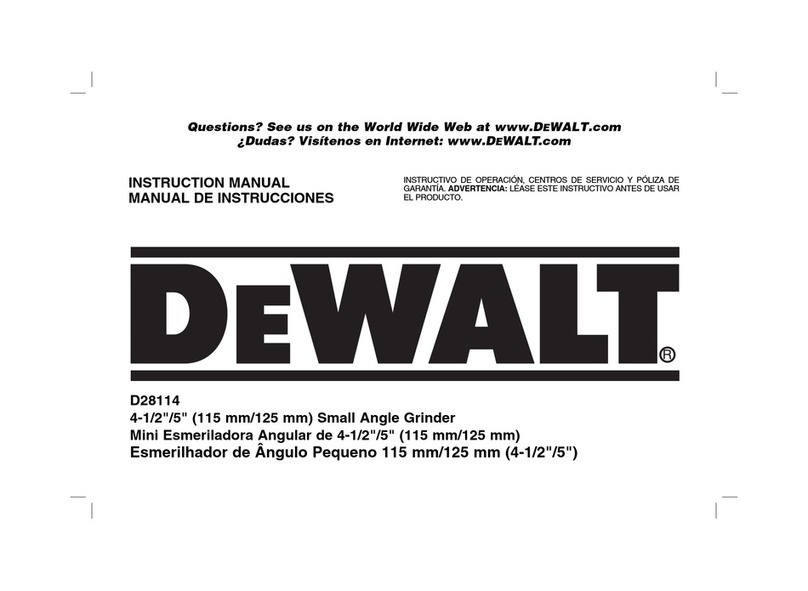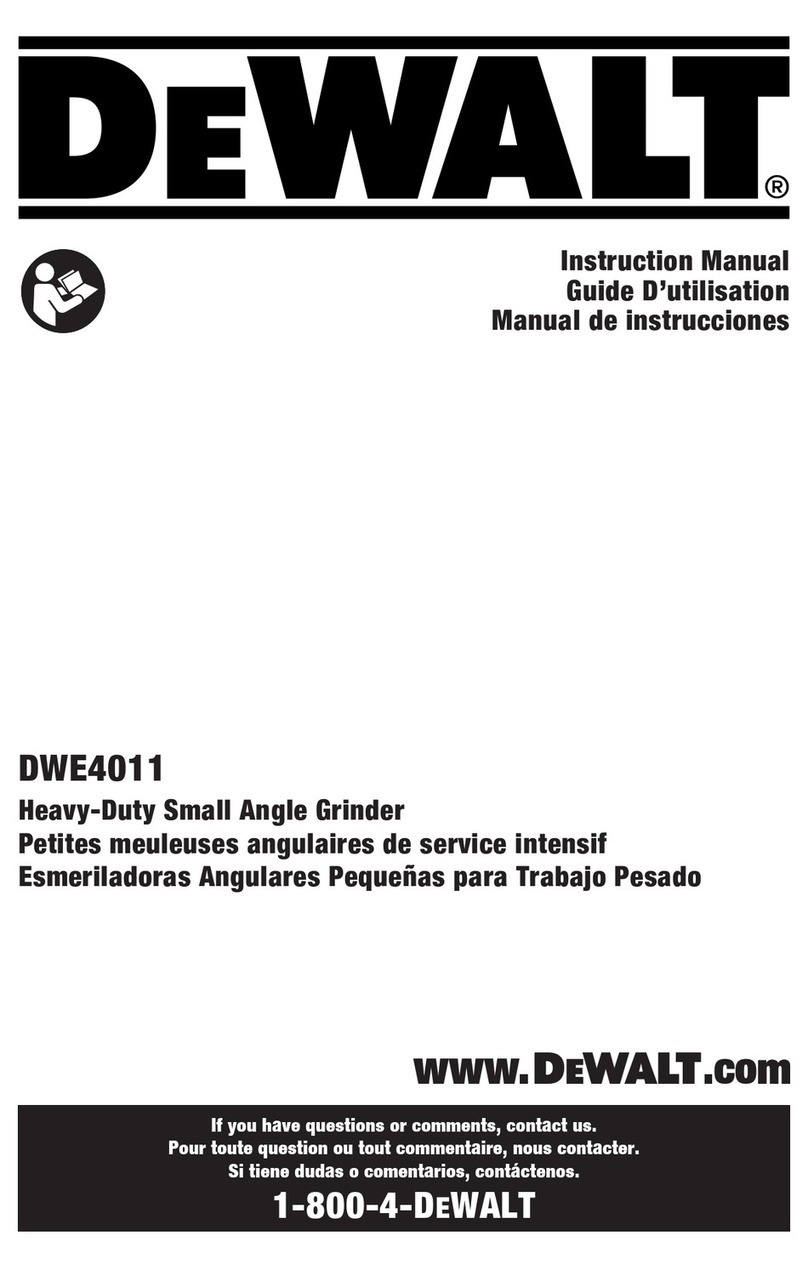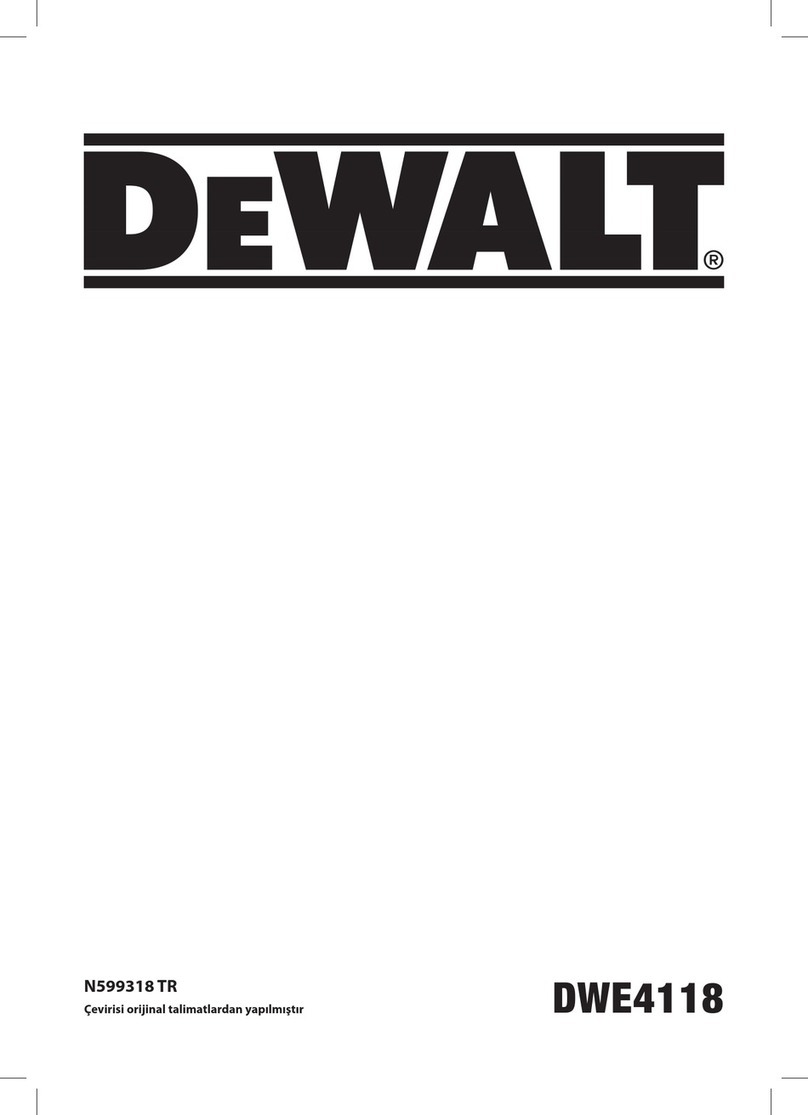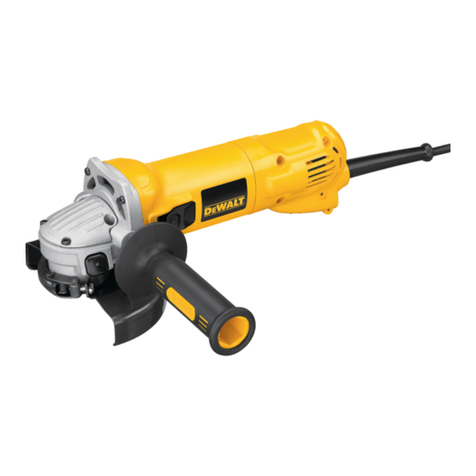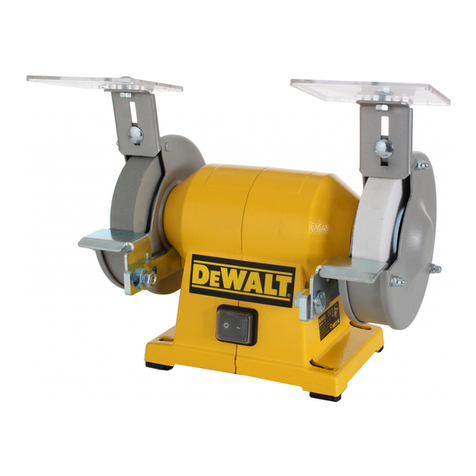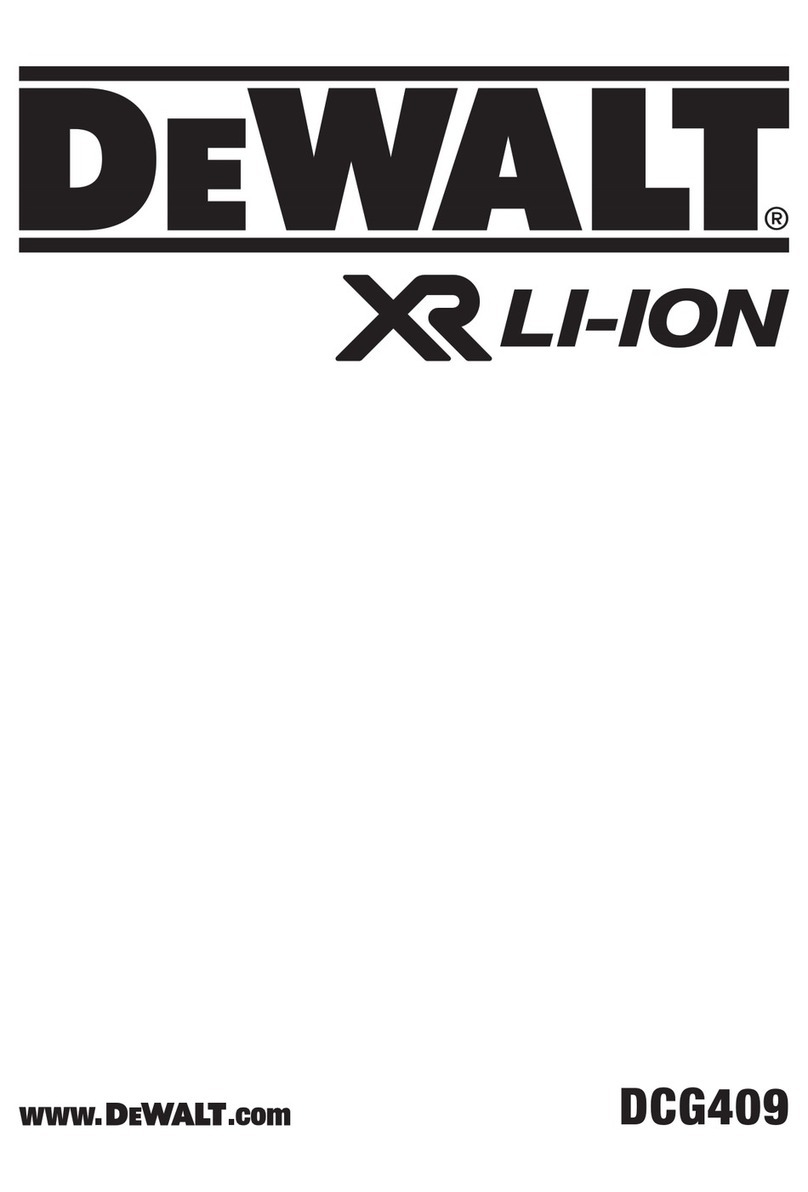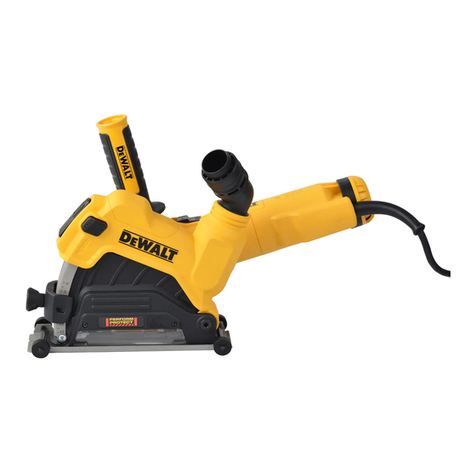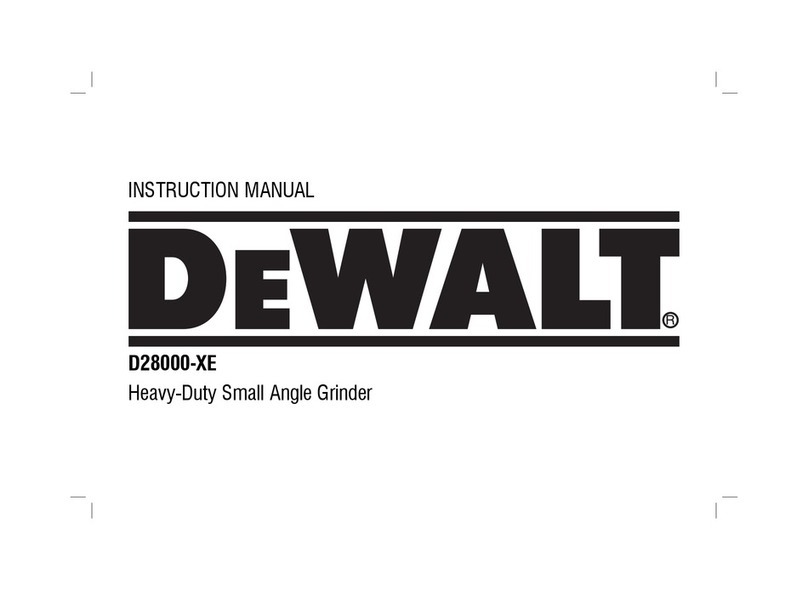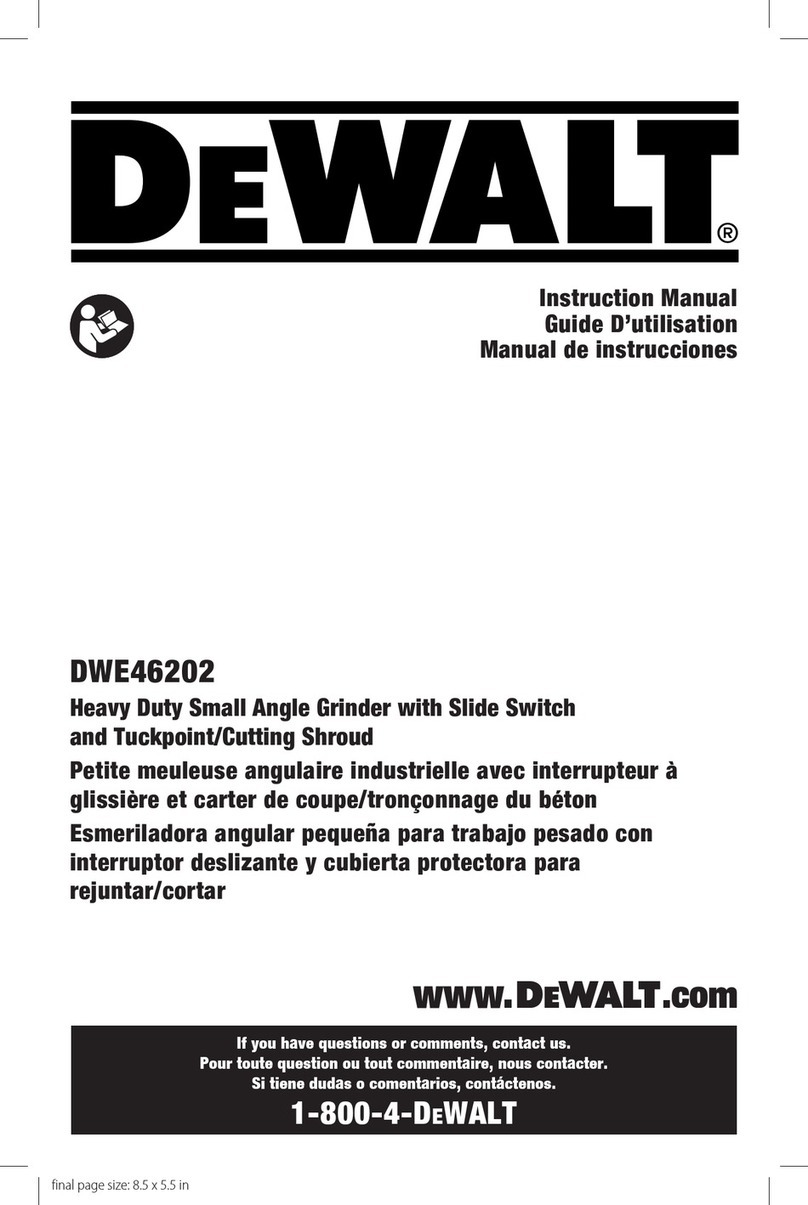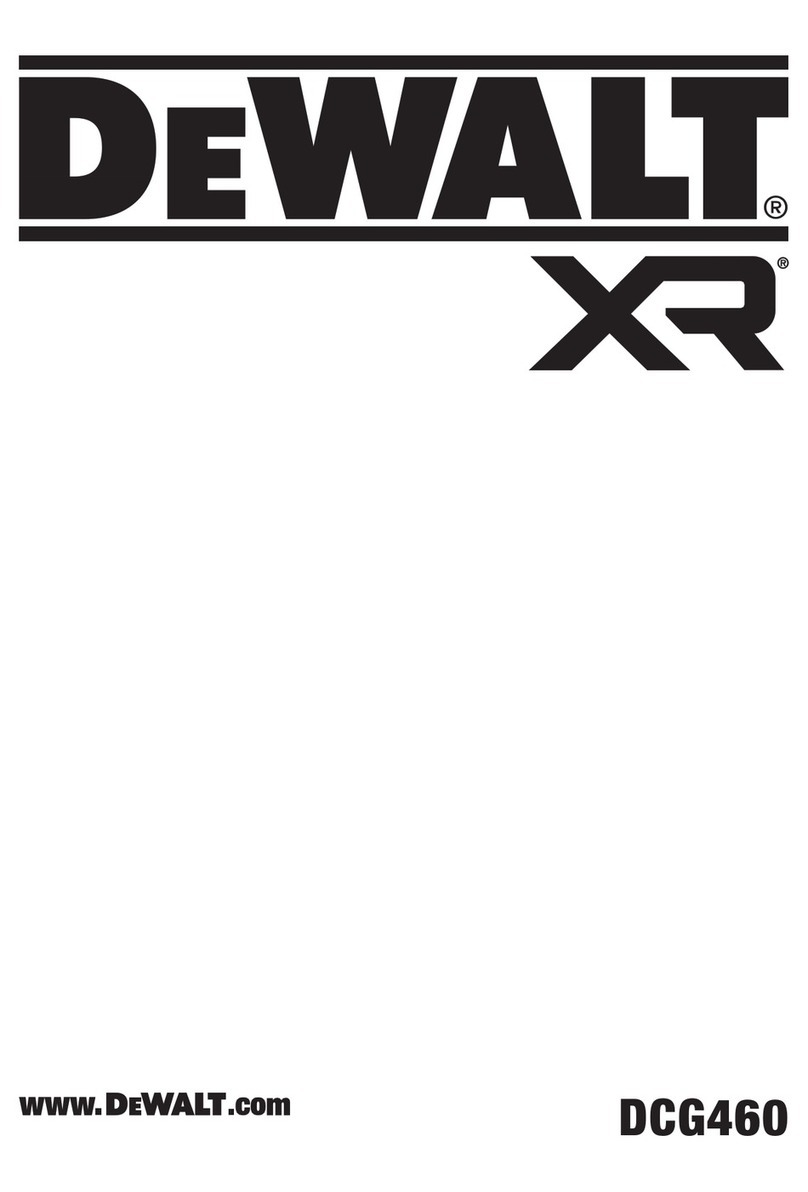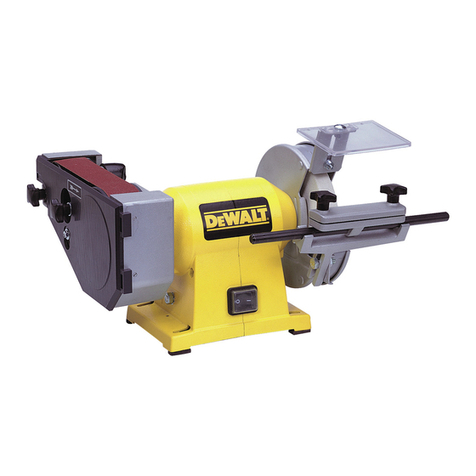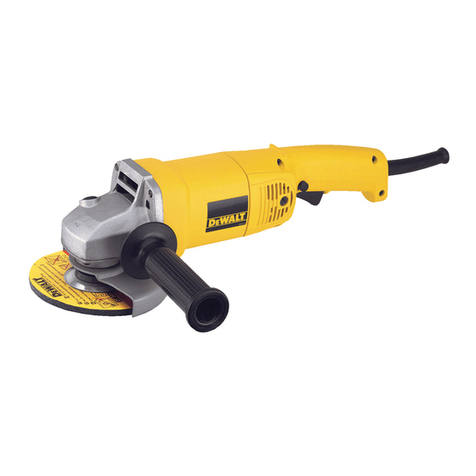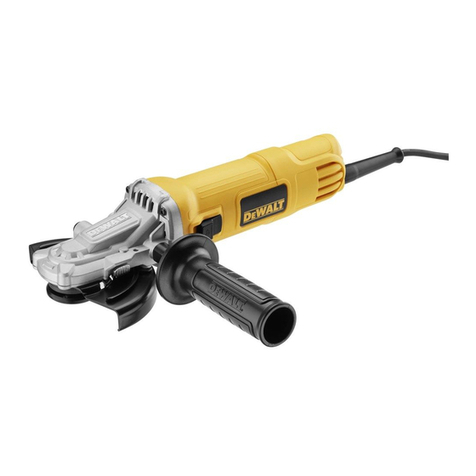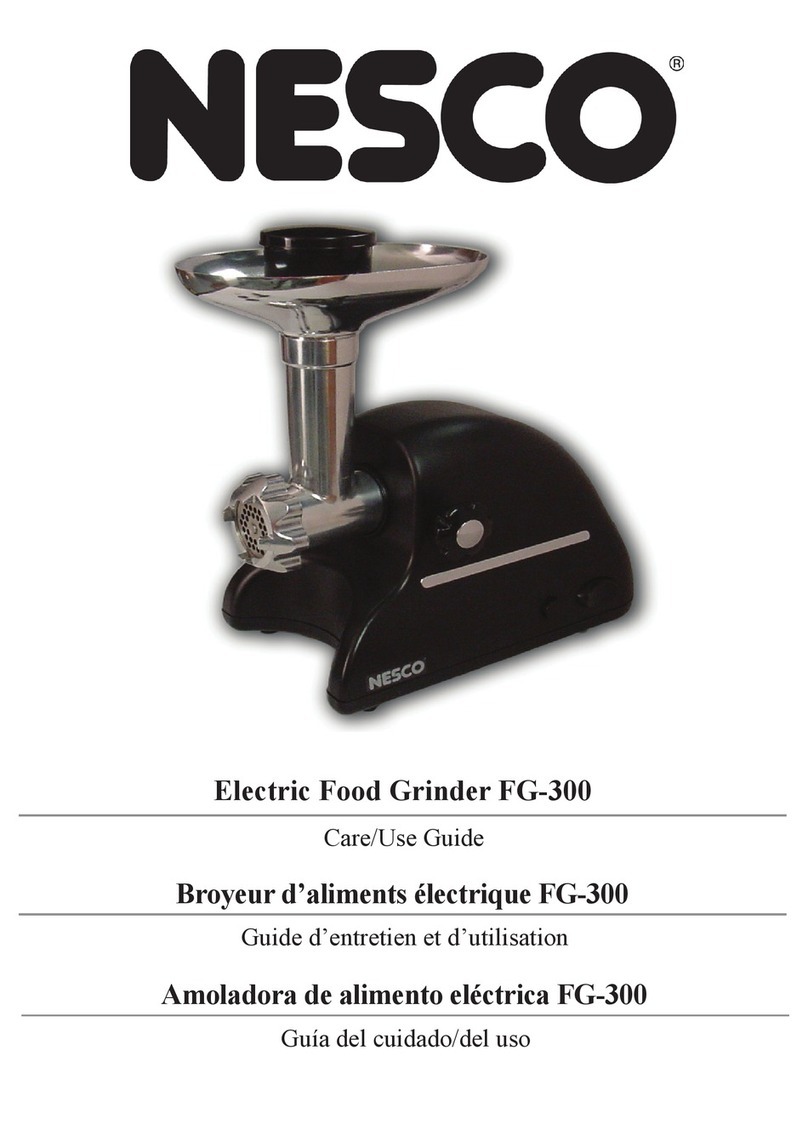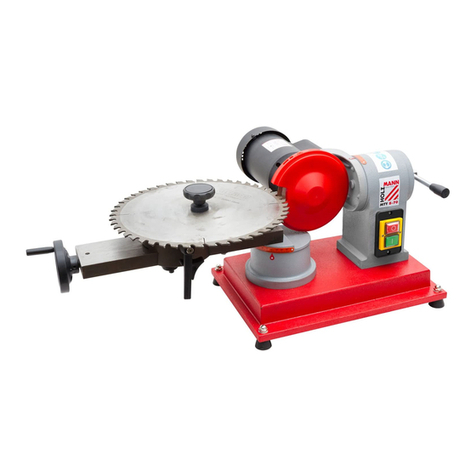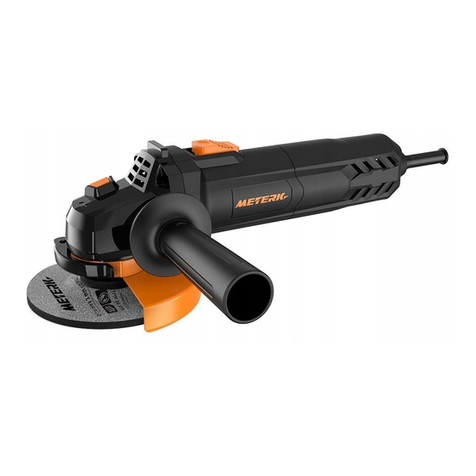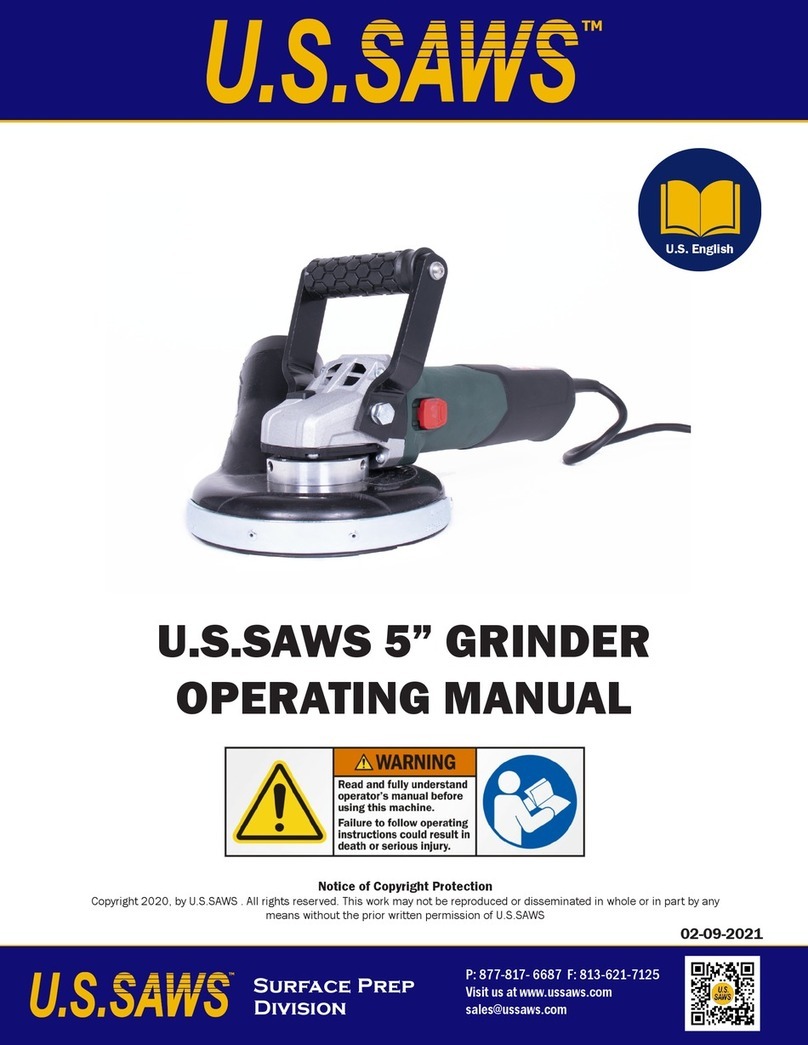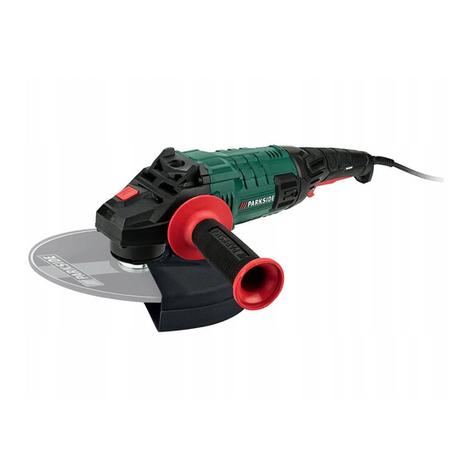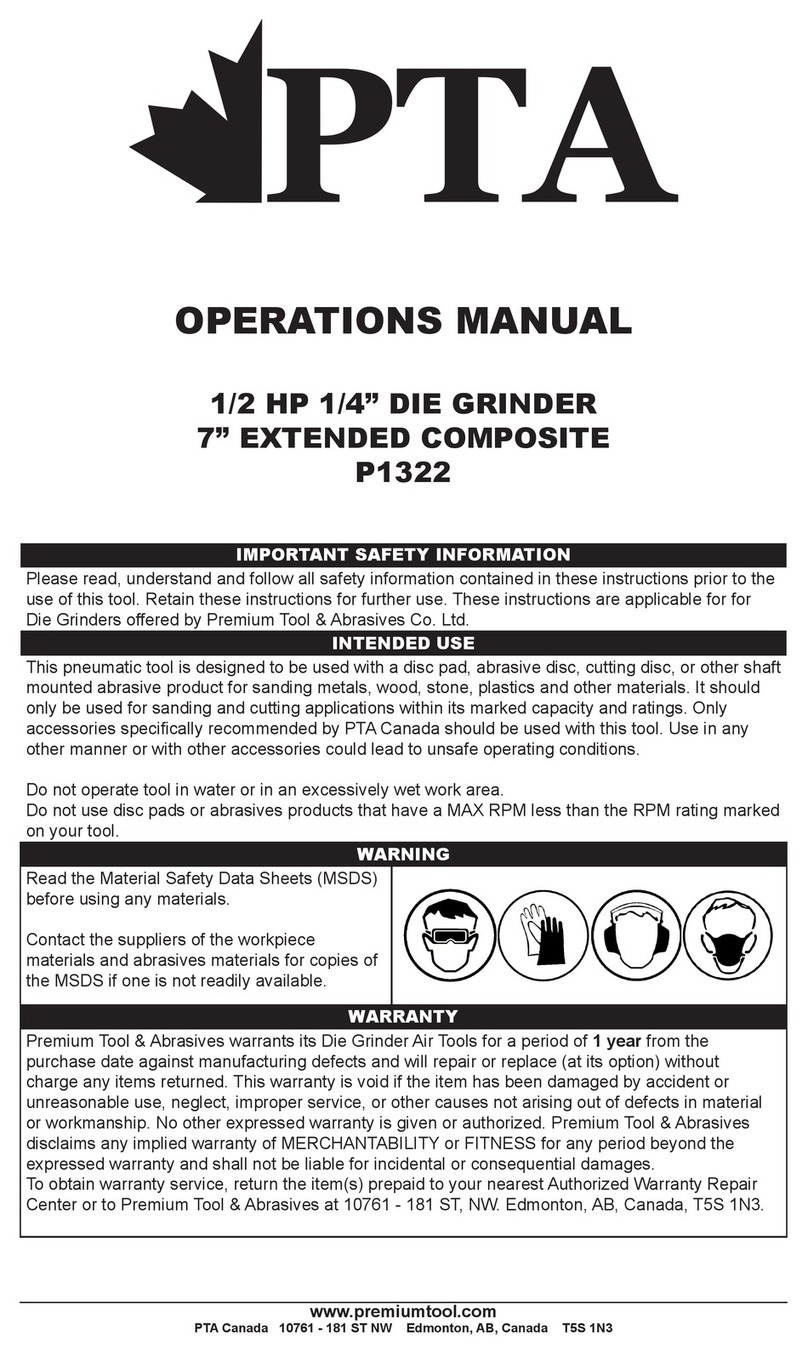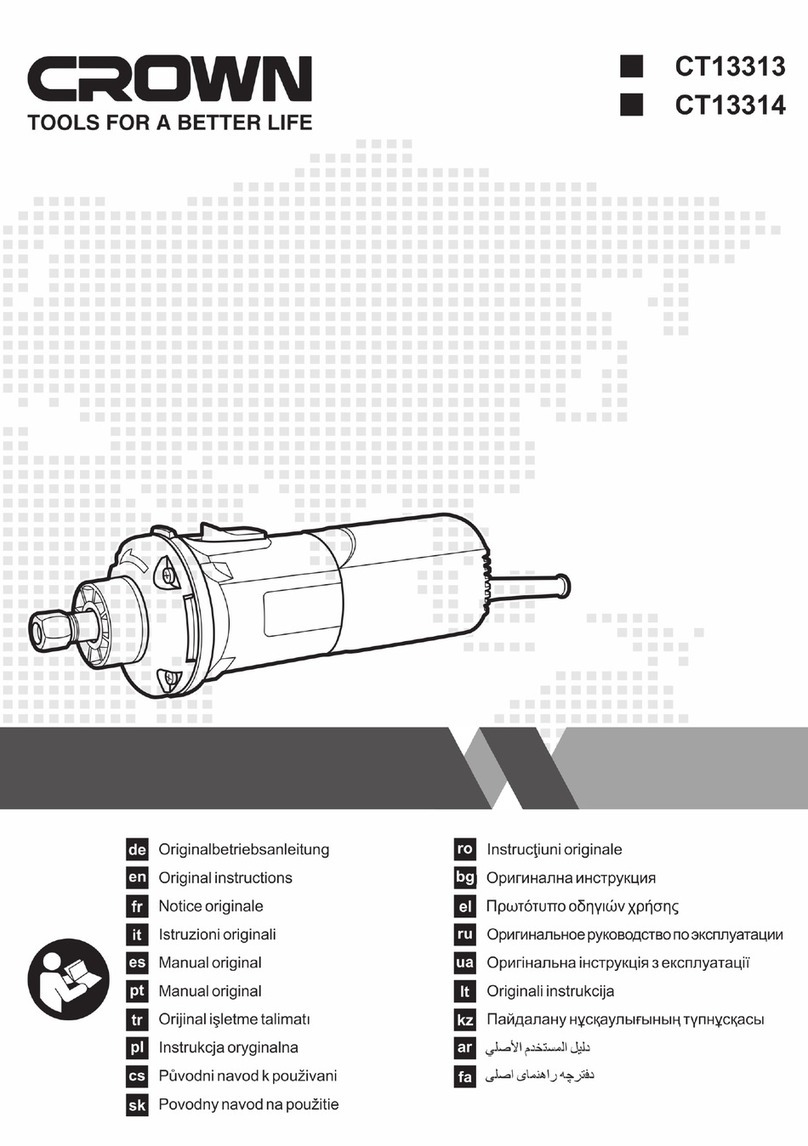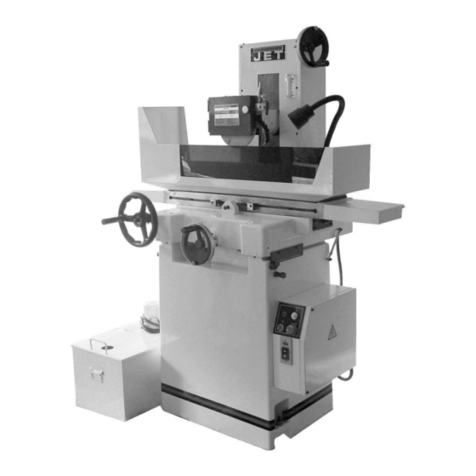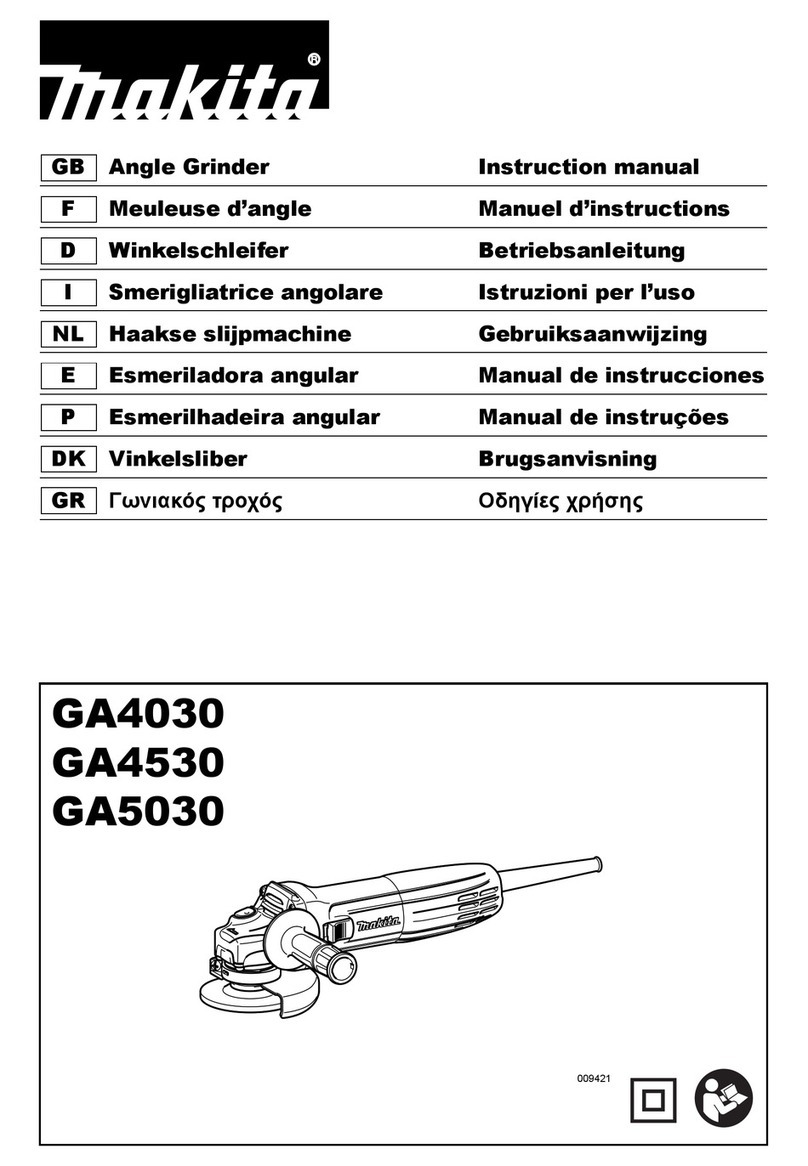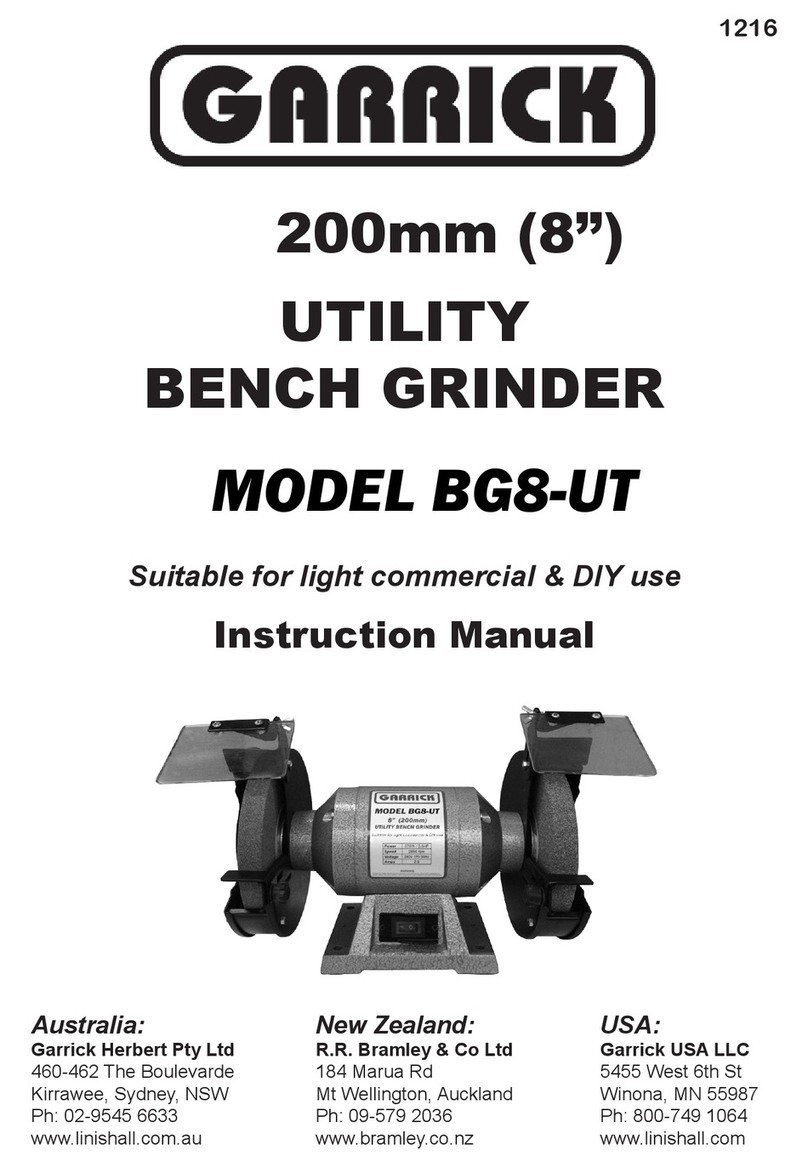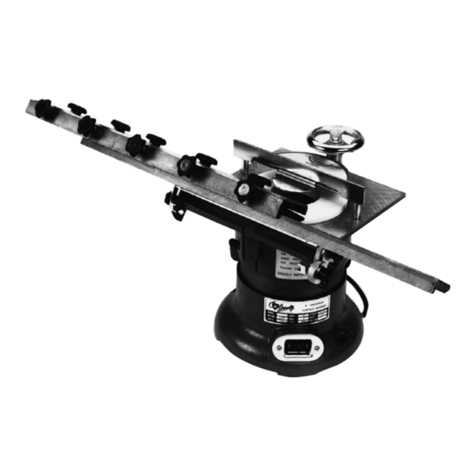Cleaning
i_,WARNING: Blow dirt and dust out of all air vents with clean, dry air
at least once a week. To minimize the risk of eye injury, always wear
ANSI Z87.1 approved eye protection when performing this.
_WARNING: Never use solvents or other harsh chemicals for cleaning
the non-metallic parts of the tool These chemicals may weaken the
plastic materials used in these parts. Use a cloth dampened only with
water and mild soap. Never let any liquid get inside the tool," never
immerse any part of the tool into a liquid. Accessories
i_ WARNING: Since accessories, other than those offered by DEWALT,
have not been tested with this product, use of such accessories with
this tool could be hazardous. Toreduce the risk of injury, only DEWALT
recommended accessories should be used with this product.
Recommended accessories for use with your tool are available at
extra cost from your local dealer or authorized service center. If you
need assistance in locating any accessory, please contact DEWALT
Industrial Tool Co., 701 East Joppa Road, Baltimore, MD 21286, call
1-800-4-DEWALT (1-800-433-9258) or visit our website: www.dewalt.
com.
Repairs
To assure product SAFETY and RELIABILITY,repairs, maintenance and
adjustment (including brush inspection and replacement) should be
performed by a DEWALTfactory service center, a DEWALTauthorized
service center or other qualified service personnel. Always use
identical replacement parts.
Three Year Limited Warranty
DEWALTwill repair,without charge, any defects due to faulty materials
or workmanship for three years from the date of purchase. This
warranty does not cover part failure due to normal wear or tool abuse.
For further detail of warranty coverage and warranty repair information,
visit www.dewalt.com or call 1-800-4-DEWALT (1-800-433-9258).
This warranty does not apply to accessories or damage caused where
repairs have been made or attempted by others. This warranty gives
you specific legal rights and you may have other rights which vary in
certain states or provinces.
In addition to the warranty, DEWALT tools are covered by our:
1 YEAR FREE SERVICE
DEWALT will maintain the tool and replace worn parts caused by
normal use, for free, any time during the first year after purchase.
90 DAY MONEY BACK GUARANTEE
If you are not completely satisfied with the performance of your
DEWALTPower Tool, Laser, or Nailer for any reason, you can return it
within 90 days from the date of purchase with a receipt for a full refund
- no questions asked.
LATIN AMERICA: This warranty does not apply to products sold
in Latin America. For products sold in Latin America, see country
specific warranty information contained in the packaging, call the local
company or see website for warranty information.
FREE WARNING LABEL REPLACEMENT: If your warning labels
become illegible or are missing, call 1-800-4-DEWALT (1-800-433-
9258) for a free replacement.
fDWE46100 _/_CU_,NG/
TUCKPOiNTJNG SHROUD
_T0 REDUCETHE RISK 0F INJURY, USER MtlS¥READ INSTI_UCTION MANUAL. FOR USE WiTH
TYPE I DIAMOND WHEELS ONLY.DO NOT CUT
METAL DONOT USE WiTH BON])E0 AB_tASHVEWHEELS. ALWAYS USE
PROPER EYEAND RESPIRATORY PROTECTION.
ELUSUA_IO DEBE LEE_ EL MANUAL
_DE INSTRUCCIONE$ PARA _EDUCIR
ELRiESGO DE LESIONES. SOLO OEBE
UTILJZARSECON MUELAO DE DiAMANTE TIPO 1. NO UTiLiZAR CON
MUELAS ABRASiVA_ CON AGLOMERANTE. _O CORTAX ME[ALES.
SiEMPRE SE DEBE_A LLEVAR LAPROTECCHON AP_OPiADA PAPA LA
VISTA Y PARA ]_ASVJASRESPIRATOJ_IAS. POUft R_DUiRE TOUT RISQUE
_J_mm_r h"_T.'_q'iT_ o EO0 M MAGES C0R POSELS,
L'UTlUSATEURO01TLIRELE
MANUEL DE "U1iLIOATEU]_.tlTdLISEn UNgQUEMENT AVEC DES MEULES
DBAMANT DE TYPE _. NE PAS tlTit JSEf_AVEC DES MEULE$ ABRASIVES
COMPOSITES, NE DECOOPSR AOCON METAUX, JLFAOT TOUJOURS PO_TER
DE L'EQUiPEMENT DE PSOTECTION OCULAIRE ETRESPiRATOIREAPP_OPRiE,
D_WALTI_0_JSTRIALTOO_CO.,BALTIMOre,cadZZ2_USA
FO R 5ERVICE INFO_t MATiO N, CALL I_O9_-DP,_ALT www,gEWALT,con_
